Young Scientist Awards winners 2021
The Young Scientist Award Session (YSAS) is held each year at the SEB Conference. Each year, SEB invites its early career delegates to submit their abstract to the YSAS session during the SEB Conference, to compete for The Young Scientist Award Session (YSAS).
The session provides the opportunity for postgraduates and post docs, who are within 5 years since completing their PhD, to showcase their talents and is designed to recognise the best young researchers in each section: Animal, Cell and Plant.
Congratulations to this year’s winners of the Young Scientists Award Session: Amanda Camara for the Cell section; Demi Sargent and Gregory Reeves for the Plant section, and finally, Nicholas Wu and Kris Sales for the Animal Section.
Our science writers, Caroline Wood, Alex Evans and Matt Burnett, kindly agreed to interview the winners.
CELL SECTION WINNER
AMANDA CAMARA, LEIBNIZ, GERMANY

Amanda Camara is a biophysicist currently working at the Leibniz Institute of Plant Genetics and Crop Plant Research (IPK) in Gatersleben, Germany, as a postdoctoral researcher. Her most recent work is on chromosome structure: trying to determine how DNA folds in an organised manner to allow genetic information to flow properly. She won the Cell Section Young Scientist Award at this year’s conference.
Amanda, how did it feel to be awarded a Young Scientist Award at this year’s SEB conference?
It felt great! I received many kind words about my research, and I have been invited to present my work at another big conference. As the results I presented were published at the same time, they received great visibility from the award. It really feels like it has opened doors in my career.
Tell me about the work you presented.
This project was meant to answer a simple question: How do holocentric chromosomes condense? Holocentric chromosomes differ from the most common type of chromosomes (monocentric) because they do not compact into that well-known X-shape. In this X-shape, the very centre is formed by centromeric units. In holocentric chromosomes, the centromeric units align entirely along both sides of the chromosome, shaping it into two parallel lines (like a double L: ll). This has some advantages, like more stability, so many different species have evolved holocentric chromosomes. I used a computational approach to simulate how the holocentric chromosomes can adopt a ll-shape. We have come up with a model in which certain proteins (structural maintenance of chromosomes proteins) make long loops of DNA, bringing the centromeric units together. Because the loops arrange side by side, the centromeric units automatically come into a line at the base of these loops. This explains some intriguing cytogenetic observations and helps us to understand how chromosomes could have evolved from monocentric to holocentric.
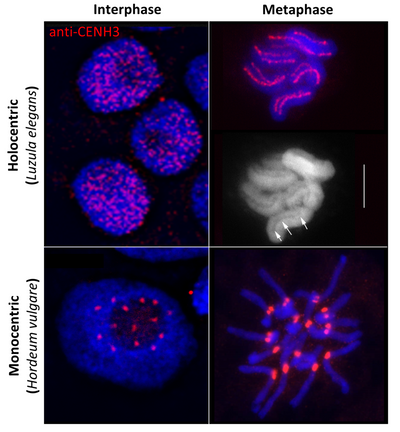
When was this unusual mechanism of chromosome organisation discovered, and does it occur in any well-known species?
Holocentric chromosomes have been observed for almost a century. Today it is assumed that around 350,000 species possess holocentric chromosomes. Many holocentric species have evolved independently, suggesting that there should be a simple mechanism behind the transition from monocentricity to holocentricity. The most studied holocentric species is the nematode Caenorhabtidis elegans. But some species of butterflies, scorpions and the papyrus plant are also holocentric.
What is the next step in your work and where do you think this research might lead in the long run?
The next steps are to understand the different types of holocentricity and the compaction process of the centromere, which is still not fully understood. In the long run, I expect to describe a general condensation process of chromosomes, which guides inheritance and the flow of genetic information. This may help us to understand chromosome type variations and might even allow us to understand genetic diseases.
What was your favourite thing about the SEB conference?
What I liked most was the opportunity to participate in the preparatory course on presentation skills. I think it is excellent that the SEB not only promotes scientific debates, but also supports the development of its members.
What advice would you give to young scientists who would like to present at future SEB conferences?
I have two pieces of advice. The first is to be confident. I think if we are always learning and trying to improve, our research can only get better, which should give us confidence. Only with this confidence can we share the impacts of our research with other scientists. The second piece of advice is to be transparent about your passions. It takes a lot of effort to do scientific research, and we wouldn’t do it if it wasn’t our passion. So don’t forget the things you like and let it show. “People love what other people are passionate about” (La La Land). Oh, and take the courses that the SEB offers!
PLANT SECTION WINNER
DEMI SARGENT, WESTERN SYDNEY UNIVERSITY, AUSTRALIA
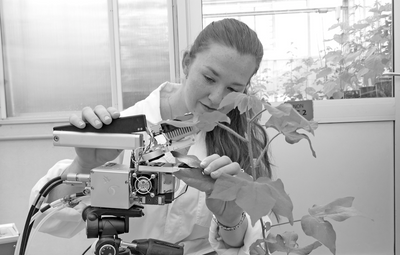
Despite “ending up in crop science almost by accident”, Demi Sargent, winner of the 2021 Plant Section Young Scientist Award, has already made an impressive start to her research career. She talks to Caroline Wood about her research and what the award means to her.
“I was actually more interested in animals as a kid and always wanted to be a vet,” says Demi. “But during my undergraduate degree, I was influenced by a really cool botanist, Rick Wetherbee, who made plant science so exciting. As I finished my master’s degree and started leaning towards crop science, I kept seeing his enthusiasm replicated in others and realised this was a very valuable, high-impact research area.”
This led to Demi undertaking a PhD at the Australian National University, Canberra, focusing on cotton. This crop, grown in over 70 countries, is a highly important economic commodity but vulnerable to the effects of climate change. “Photosynthesis is the key process that determines yields in crops including cotton, but many of the crucial enzymes are very thermosensitive and can become non-functional at higher temperatures,” Demi explains. This is a particular concern for Australia, where daily summer temperatures can exceed 40°C. Because commercial cotton varieties show poor variation in thermotolerance, Demi’s objective was to screen wild relatives to identify those that maintained strong photosynthetic capacity even at high temperatures.
Using a range of techniques, such as gas exchange analysis and measuring Rubisco enzyme kinetics, Demi found a number of cotton species with promising traits. “We were particularly pleased that these included native Australian cotton species, but this makes sense because many of these are naturally found in deserts,” she says. Demi is now building on these results in a postdoctoral position at Western Sydney University and CSIRO, working to identify the genes and mechanistic basis behind these traits, with the ultimate aim of introducing them into high-yielding cotton varieties. “We also intend to investigate traits that can improve drought tolerance, because water scarcity is becoming an increasing issue worldwide, but particularly in Australia,” she says.
At the 2021 SEB Annual Conference, Demi’s presentation “The Gossypium genus: an untapped pool of novel photosynthetic traits for cotton?” impressed the judging panel for its content and clarity, and her ability to field questions. “It was a really good experience, and the questions came from some perspectives that I had never considered before. It was great to see so much interest in unusual, wild species of cotton that have been overlooked until now,” she says.
This year, of course, Demi also had the added challenge of trying to stand out at an entirely online conference. Nevertheless, this did have some benefits: “Because I’m based in Australia, the online format made it much easier for me to attend, and I also found it more straightforward to manage a busy schedule with concurrent sessions. However, the time difference meant I was often sitting up until the middle of the night to hear some of the other talks—but it was definitely worth it!”
Winning this award, she says, has been validation that she is definitely on the right path. “There is a lot of pressure on early-career researchers because competition for grants and positions can be fierce, so this came at an ideal time to help me improve my visibility,” she says. With that in mind, what would Demi’s advice be to other young researchers? “Resilience is crucial, especially when you are trying to get established. Patience is also so important: you always want results yesterday but sometimes you just have to wait for things to work. But keep persisting and you’ll get there!”
PLANT SECTION WINNER
GREGORY REEVES, UNIVERSITY OF CAMBRIDGE, DEPARTMENT OF PLANT SCIENCES UK.
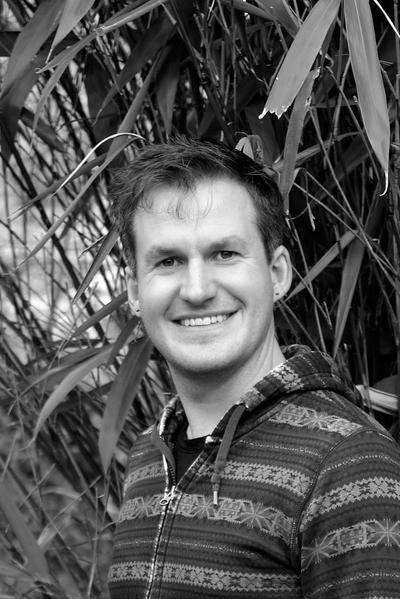
Gregory Reeves is a postdoctoral researcher at the Department of Plant Sciences, University of Cambridge, UK. He won the Plant Section Young Scientist Award at this year’s conference.
How did it feel to be awarded a Young Scientist Award at this year’s SEB conference?
I felt very privileged to be honoured with this award. I was pleasantly surprised by the decision of the audience and judges. Thank you all very kindly for considering me for this award.
Tell me about the work you presented.
I have developed a new way of making hybrids between distantly related crops that use the C3 photosynthetic pathway and species that use the C4 photosynthetic pathway. This could significantly enhance yield, but it is challenging because it involves complex modifications to the biochemistry and anatomy of the leaves. More broadly, the technique may enable the incorporation of other complex traits between sexually incompatible species for crop improvement.
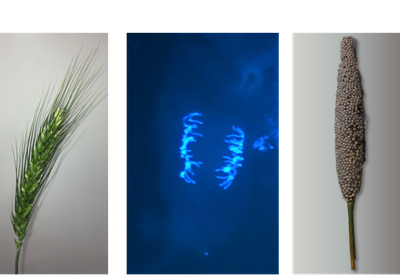
wheat and millet
For those of us that aren’t plant scientists, can you explain the difference between C3 and C4 photosynthesis?
C3 plants photosynthesise less efficiently than C4 plants. There are two major reasons for this—differences in leaf anatomy and CO2 fixation biochemistry. With regards leaf anatomy, relative to C3 plants, C4 species have a higher vein density, larger cells adjacent to the veins (bundle sheath cells), and a greater reliance on these bundle sheath cells for photosynthesis. These anatomical differences facilitate a biochemical CO2 concentrating pump from the atmosphere through mesophyll cells into the bundle sheath cells, and this boosts the overall capture of CO2. Together, these two major differences enhance the levels of CO2 relative to O2 in the leaf, increasing rates of photosynthesis. In terms of economic output, this means that C4 plants are more agriculturally productive.
How is your method of transferring the C4 photosynthetic pathway into C3 crops different to what other plant scientists are doing?
Well, my work is just a step towards the eventual goal of transferring the C4 pathway into C3 plants. Realising that goal will be a long-term project indeed. I guess the major differences with what I am attempting verses others’ approaches is that I am using breeding and hybridisation as opposed to genetic engineering or gene transformation approaches. The major advantage of my methods is that we don’t need to fully understand the genetic basis of the C4 photosynthetic pathway in order to transfer it, whereas in gene transformation, you need to know which genes are required.
What are your hopes for this research in the next 10–20 years?
My hope is that within the next 10–20 years, this hybridisation method will be able to transfer aspects of photosynthetic efficiency into crops such as wheat and rice. It also has ramifications for other traits beyond photosynthesis, such as disease resistance or salt tolerance. It is my sincere hope that these methods become broadly useful to cereal agriculture as a whole.
Why did you decide to become a scientist?
In high school I volunteered for an international charity that operated local feeding centres aimed at providing free food in impoverished areas. Working in developing countries, and at home, I saw the need for change in how food is produced and distributed. This left an indelible mark on my mind and made me want to help others through my work. I hope that my work to create higher yielding crops may help increase agricultural productivity, and that this technology is put into the hands of those who need it most.
What was your favourite thing about the SEB conference?
The SEB conference was the first virtual conference I’ve attended. I really enjoyed being able to present and attend other talks from the comforts of home. It was very convenient to see more talks than I would have been able to normally as I didn’t need to dash from room to room.
Many things have changed over the past 2 years, but thankfully others have stayed the same. One being that we still celebrate the hard work and achievements of the younger researchers among us with the annual Young Scientist Awards Session (YSAS). Let’s hear from the 2021 YSAS winners!
ANIMAL SECTION WINNER
NICHOLAS WU, UNIVERSITY OF ILLINOIS AT URBANA-CHAMPAIGN, USA
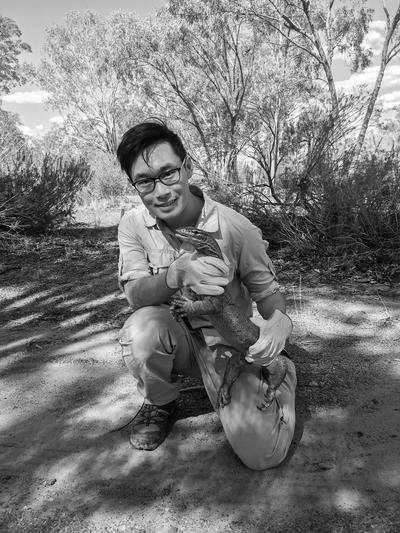
THE FISHY BUSINESS OF PLASTIC POLLUTION
It is often said that energy is the currency of life, but just like other forms of currency, the cost of living rarely remains stable. Thanks to Nicholas Wu, an ecophysiologist at the University of Sydney, Australia and joint winner of the Animal Section Young Scientist Award this year, we are learning more about the anthropogenic factors that are making life more energetically expensive for aquatic animals. “My YSAS presentation discussed how global warming and endocrine-disrupting chemicals like bisphenol A (BPA) from plastic pollution are affecting the energy that fish invest into growth,” he explains. “The rate of growth relies on hormone control, but temperature and BPA can interact to directly impact endocrine functions related to growth, such as how much energy is invested.”
To see how these two factors were affecting the costs of growth for fish, Nicholas measured the resting O2 consumption, growth rates, and mitochondrial efficiency of developing zebrafish (Danio rerio) under different experimental temperature and BPA treatments and controls.1 “Overall, our study showed that there are long-term costs to growing in warmer, polluted environments, and such developmental alterations can manifest into adulthood,” says Nicholas. “The cost of growth was highest for fish reared under warm conditions with BPA, suggesting the combined exposure of these two stressors act synergistically to increase the cost of growth.”
The impact of these additional energetic costs can have serious consequences for survival and reproduction, and even beyond the fish themselves, as Nicholas goes on to explain. “Growth is a fundamental progress that can have cascading effects on an individual’s life history, population growth, and, in turn, energy transfer across trophic levels. Therefore, anthropogenic disturbances can alter ecosystem structures and the distribution of biomass in food webs through changes in individual‐level growth.” Nicholas hopes that the research he presented at the YSAS serves as a stepping stone to exploring how BPA and temperature rises can affect the cost of growth in commercially important species such as cod and barramundi. “In theory, the hormone effects should be conserved across species, and the effects of temperature and BPA would be similar,” he says, “but, of course, the only way to know for sure is to test it in other species.”
Naturally, Nicholas is very pleased to be a winner of this year’s Young Scientist Award. “I found out about the YSAS outcome on Twitter after waking up the next morning, due to the time difference in Australia, and was exhilarated,” he says. “I was glad to see that lots of people enjoyed the research I presented.” Since this year’s SEB Conference was hosted online, the YSAS presenters had to adapt their talks to a virtual format, which came with a mix of rewards and challenges. “With such a large conference, you often miss out on concurring talks in person, so having the option to view recorded videos was a great benefit,” adds Nicholas. “I did miss the in-person networking but SEB is always great because of the friendly and fun community.”
Finally, Nicholas has this advice for future YSAS applicants: “My main advice is to keep applying! I have applied for the YSAS every time I’ve attended since 2017 and this year it was a surprising experience to win. I also recommend getting other people to read through the abstract as they will have a better eye for identify weaknesses and improvements in your application.” He concludes that “you shouldn’t give up if you fail, learn from feedback and improve on it—I am still trying to improve on my applications!”
ANIMAL SECTION WINNER
KRIS SALES, FOREST RESEARCH - FORESTRY COMMISSION UK
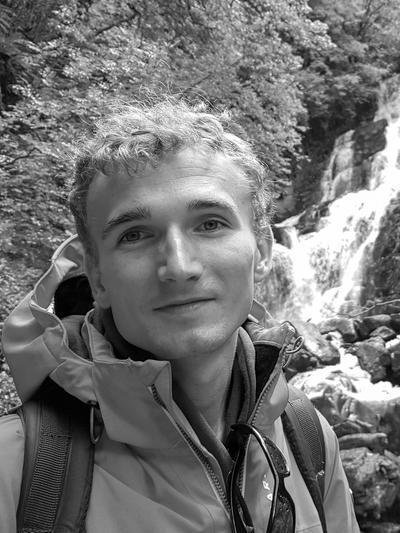
Climate change is often most strongly associated with a global rise in temperature, but another major factor is the increase in frequency and intensity of extreme climatic events. One such event is heatwaves, which can not only be deadly to humans and wildlife but can also have a serious impact on reproductive fitness, as urban forest research scientist and Animal Section Young Scientist Award joint winner Kris Sales has discovered. “In 2013, researchers concluded that there was disturbingly limited knowledge on the physiological mechanisms that underlie climate-related extinction,” explains Kris. “Our group believe that one candidate is heatwave-induced male-specific infertility.”
Excessive heat can be a huge problem for all living things, and with the current climate crisis, it is vitally important that we understand the sub-lethal effects of heatwaves on the ability to produce future healthy generations. “This question was largely unexplored in ‘cold blooded’ animals such as insects,” says Kris, “despite them comprising most of biodiversity,2 and, by their definition, being potentially more sensitive to environmental temperature fluctuation.” During his YSAS talk, Kris presented his laboratory experiments with red flour beetles (Tribolium castaneum), describing how they subjected some of the beetles to temperatures 5–7°C above their thermal optimum, while others were maintained at the control temperature. “We found that heatwaves consistently halved the reproductive output of males, relative to females and unheated controls,” he says. “Interestingly, effects were similar when exposing mature sperm stored in females.”
To make matters worse, these effects weren’t only observable in the heat-treated insects, but also in their offspring, who lived shorter lives and had a reduction in reproductive fitness. “Moreover, damage to testes and reproductive fitness was greater if males were exposed to multiple events, or while they were sexually maturing,” adds Kris. All is not lost, however, because the team found that males were able to recover their reproductive fitness to pre-heated levels after around 20 days, and there is evidence that males adapted to warmer temperatures may be able to mitigate the effects of a sudden heatwave. “Long-term culture in warmer conditions increased the critical thermal optimum and maximum limit for male reproduction,” explains Kris. “We found that warm-adapted males’ fertility did not decline as expected following heatwave exposures.”
Kris’ award-winning talk is actually just one area of his recent research, with a lot of his time focused on understanding how climate change will affect biodiversity. “Over the past year I’ve worked on insect reproduction, nematode ageing, urban forests, marine biology in Norway, and teaching in developing countries,” he adds. “If the research has analysis, behaviour, woodlands, and/or arthropods, I am happy!” However, looking forward, he is keen to broaden the scale of his research to help shed light on the bigger picture. “I’d love to generalise findings across species, account for longer-term dynamics, replicate work in natural settings, and investigate damage further with cellular and molecular techniques.”
The 2021 SEB Conference was Kris’ first SEB event and also his first virtual conference. “SEB 2021 was a truly memorable experience,” he says. “The breadth and diversity of the SEB membership is something that few societies can rival.” Upon finding that his research had won this award, Kris felt “surprise, joy, and gratitude, in that order!” He is quick to thank his audience for listening to his talk and to the SEB judges for their selection. “I’d also like to thank Team Tribolium, colleagues, friends, and fiancé Dr Jessi Gardner, who all made my PhD possible and unforgettable.” For budding YSAS applicants, Kris has the following words of wisdom: “Just like with an exam or job application, definitely make sure to look at the criteria on the YSAS page. Marking is weighted towards the scientific content but it’s also very important to consider the significance, clarity, and aesthetic of the presentation!”
References
1. Wu NC, Seebacher F. Bisphenols alter thermal responses and performance in zebrafish (Danio rerio). Conserv Physiol 2021, 9: coaa138.
2. Bar-On YM, Phillips R, Milo R. The biomass distribution on Earth. Proc Natl Acad Sci USA 2018; 115: 6506–6511.
